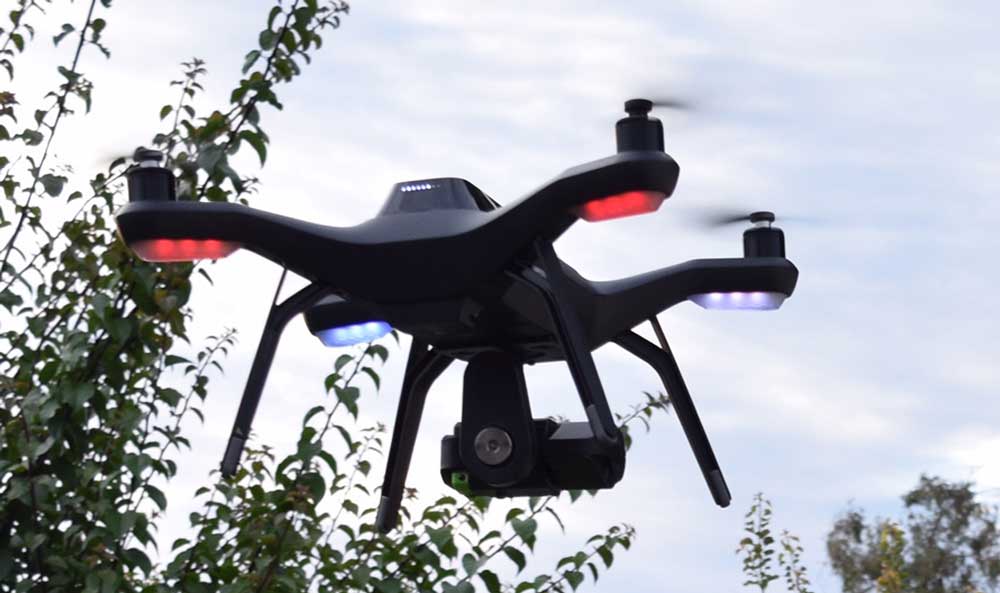The Drone That Detects Humans in Need in a Heartbeat
In times of crisis and natural disaster, it’s only natural to want to be able to save everybody. With resources often thin on the ground, it’s important to prioritise rescue efforts where they are needed most.
Last year, a team of researchers from the University of South Australia published research regarding the development of drone technology that can detect a person’s breathing and heartrate from up to 60 metres in the air.
The technology was borne out of a collaboration with the Australian Defence Force, who often aid victims during humanitarian crises.
Professor Javaan Chahl, team leader, explained to the ABC recently that the camera can sense a pulse on the side of your head by as little as one millimetre each time your heart beats.
Cool @unisaresearch featured by @ABC today – #drones that can measure your heart beat from 60 metres in the air. Lifesaving #technology
— UniSA Newsroom (@UniSAnewsroom) March 8, 2018
“Basically in a disaster, unfortunately you have to prioritise who’s living, who’s dead and perhaps who’s dying, and this might allow a drone to map a scene and establish the general condition of people,” he said.
But while Professor Chahl is optimistic about the lifesaving potential of the drone technology, he’s by no means in the dark with regards to its potential for malicious applications such as spying, or detecting enemy lifeforms.
“I’d be very surprised if any Western country got involved with robots targeting people, but not everyone operates by the rules,” he said.
“If we can start doing these things, so can somebody who has a bad agenda.
“It’s quite conceivable but there are going to be weapons systems that look at heart rates and decide to kill people.”
Professor Chahl has similar concerns for AI-enabled weapons and technology.
“The same software could do facial recognition, measure their heart rate after climbing up some stairs in the subway, and you could do that for 100,000 people day,” he said.
“Somebody could take their data and do something with it — you could try to sell them something, you could deny them insurance, you could tell their employer.
“We just hope the rules-based-order will prevent it from happening.”
The founder of WeRobotics Patrick Meier, who have several ‘Flying Labs’ at which they train local governments and NGOs to utilise drones in times of crisis, has firsthand experience of the benefit of drones in humanitarian response.
Having overseen the flight of drones for a range of purposes including response to flooding in Tanzania, and delivery of medical supplies in the Amazon, he understands the potential of developing the technology.
A big thanks to @BDInnovationHub for the amazing opportunity to test cargo #drones in the Peruvian Amazon! We’re confident our findings will help pave the road for #robotics in medical delivery! https://t.co/4iSVeljEYn pic.twitter.com/Biea5wxQWb
— WeRobotics (@WeRobotics) November 21, 2017
Meier told the ABC, “If you’ve been bitten by a snake in the Amazon rainforest, would you rather wait six hours for the antivenom to show up or do you want to have that in 35 minutes?”
He’s also pioneered the use of “crisis maps” — live maps of humanitarian disasters, made using crowdsourced data, satellite imagery, and other inputs.
But he also has experienced technology intended to save lives is just as likely to be co-opted and weaponised in a conflict zone.
“Earthquakes don’t shoot back. When you’re in conflict zones, things do shoot back and people do very much get targeted,” Mr Meier said.
“Having worked on a number of projects in conflict zones, there were a few too many close calls in how regimes and various factions co-opted this technology, hacked into various platforms… to flood false information.”
Despite the challenges, he argues opting out of warzones altogether is simply not an option.
“A good two thirds of all international humanitarian crises have a conflict element to them, so we can’t afford to ignore two thirds of humanitarian crises because of these challenges.
“What we need to do is be very careful in managing the risks in using these technologies.”



















